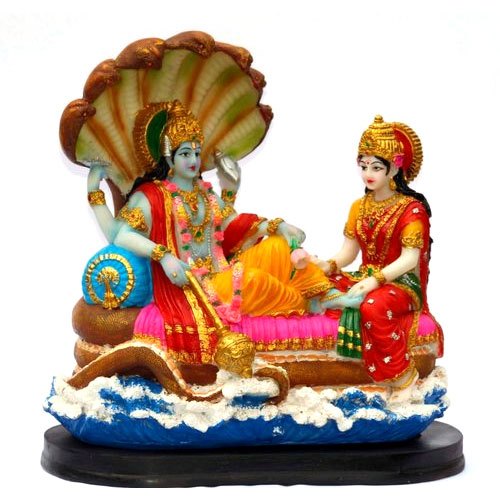
In the previous episode, we had witnessed Sage Maarkandeya taking Yudishtra and Co. through the time period calculation of the four Yugas that the world goes through – The “Krita Yuga”, “Tretha Yuga”, “Dvaapara Yuga” and the “Kali Yuga”. These four Yugas, as we may note, occur and re-occur as cycles. Even within this cycle, the Krita Yuga is supposed to be the longest one, and the Kali Yuga is supposed to be the shortest one. All the four Yugas’ span is a multiple of 1200. Thus, the “Krita Yuga’s span is around 4800 Deva Lokha years. Similarly, the Tretha Yuga’s span is around 3600 Deva Lokha years. The Dvaapara Yuga’s span is around 2400 years, and finally the Kali Yuga’s span is around 1200 Deva Lokha years! Thus, if we add up all these numbers, we would get 12000. Thus, this is the calculation of the four Yugas’ timespan and we should understand this first. Hence, we may note here that the entire time span for all the four “Yugas” put together is 12,000 “Deva-Lokha years”. We’ve also seen that one year as per our “Manushya Lokha” is equivalent of one day of the “Deva-Lokha” year calculation. Hence, we can witness the enormity of time that we’re talking about here.
Now, as we understand this calculation clearly, we go into something that is very important. There is something called as “Yuga-Sandhi”, which occurs in between the two Yugas. The time period that immediately comes after the end of the previous Yuga and during the commencement of the next Yuga is referred to as “Utthara-Sandhi”. The time period that signifies the last few years of the previous Yuga is referred to as the “Poorva Sandhi”. Thus, during these junctures between two Yugas, for example, between the “Tretha Yuga” and the “Dvaapara Yuga” or the “Dvaapara Yuga and the Kali Yuga”, these two “Poorva Sandhi” and “Utthara Sandhi” will join together. Now, if we’ve to put this in the perspective of numbers, the actual full time period of the “Krita Yuga” is 4000 “Deva Lokha” years. Similarly, the “Tretha Yuga” actually spans for 3000 years, the “Dvaapara Yuga” for 2000 years and the “Kali Yuga” for 1000 years. Now to calculate the “Sandhi” here, we had earlier witnessed that the “Krita Yuga” is of 4800 Deva Lokha years. Now this 800 year-period is the “Sandhi” period. Now let us split this 800 into two halves – 400 and 400. Let us put one 400 before the start of the “Krita Yuga”, and the next 400 towards the end of the “Krita Yuga”. Similarly, for the “Tretha Yuga”, we have 600 extra years, isn’t it? Hence, we shall put 300 on either side. Similarly, for the “Dvaapara Yuga”, we have 400 extra years, isn’t it? Hence, let us put 200 on either side. Similar is the calculation for the Kali Yuga as well wherein we will have 100 on either side. These “extra years” on either side that we’re talking about here are nothing but the “Poorva Sandhi” and the “Utthara Sandhi”.
Now, all these calculations that we’ve witnessed till now, are all of the “Deva Lokha” years and not the “Manushya Lokha” years! If we’ve to convert this 12,000 Deva Lokha Years to an equivalent number of “Manushya Lokha” years, it would come to around 43, 21,000 years! Thus, as per our calculation in this Manushya Lokha, one “Chatur Yuga” is equal to forty-three lakh twenty-one thousand years, or approximately 4.3 million years. We’re now talking about one “Chatur Yuga” only. Like this, if 1000 “Chatur Yugas” pass by, it is equivalent of one “daytime” of Bhagawan Brahma. Thus, we can see here that for Bhagawan Brahma in the Satya Lokha, for one day of his, we’ve to cross around 8.6 million years as per the “Manushya Lokha” calculation. Similarly, Bhagawan Brahma’s life span is approximately a hundred such years, which means, it would be around 900 million years as per our calculation! Thus, at the end of the hundredth year of Bhagawan Brahma, the world goes into a “Pralaya Kaalam”. This is also referred to as the “Praakrita Pralayam”.
Thus, when Sage Maarkandeya spoke about the “Pralaya Kaalam” that the world underwent during the “Matsya-Avatara” time, we shall assume that Bhagawan Brahma had by then, completed a hundred-year life cycle at the Satya Lokha. Thus, if one gets caught into this world that goes through such “Pralaya Kaalam” time and again, it means that he / she has got caught into the “Leela-Vibhuti”. However, if this person surrenders to Bhagawan and with this, when he / she attains the highest “Moksha”, this person transcends into the permanent world called “Nitya-Vibhuti”, which is never subjected to any form of creation or destruction with time. This “Nitya Vibhuti” is nothing but Bhagawan Vishnu’s Vakiunta!
So for today, let us understand up to this point, and we shall wait till the next episode to witness Sage Markandeya’s continued accord! Stay tuned! 🙂
